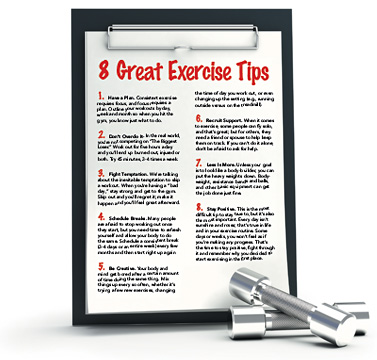
A common question asked by men looking to lose weight in the gym is 'What is the best exercise to do to lose weight?' While the answer to this question may vary from person to person, there is a certain type of exercise that works better at burning fat. These are just a few of the exercises that can help you lose excess body fat. To see the best results, you should do one each day. Whatever your profession, the important thing is to find something you like.
Resistance training benefits a wide variety of muscle groups. Begin with a gentle workout for beginners and increase intensity and duration over time. You can mix it up when you work out at the gym. It is easier to stick with a routine if there are a few different options. Jake Chapman from F45 Maidenhead is the Head Trainer.

Be clear about your goals when selecting a gym. If you're looking to lose weight, resistance training is the best option for weight loss. The benefits of this kind of workout are numerous. This type of workout is great for building lean muscle and reducing calories. You should stick to your chosen routine, and be consistent in following it. Find an exercise that works for you to lose fat.
Resistance training is a great way to burn calories and increase muscle mass. It's also great for mood boosting. Resistance training is the best exercise to lose fat for beginners. There are many methods of resistance training to choose from, so make sure you find the one that is right for you. The key to success is to know your goals and to stick to them. If you can follow this guideline, your goal will be easier to accomplish.
Walking is the best form of exercise for weight loss. It is very easy on joints, does not require equipment, and is a great exercise for beginners. Walking at a speed of about 4.5 mph will help a 70-kg person burn 186 calories. The same exercise would result in a person losing more weight if they did it at the same pace. The benefits of strength training last for many days.

Walking is another great exercise for beginners. It is very easy on the joints and doesn't require any equipment. It can be used to burn fat in different areas, making it one of the most effective exercises for losing weight in the gym. For advanced workouts, it may be necessary to modify your routine or look for a better program. Combining cardio and strength training is the best way to lose fat.
FAQ
Exercise: Good for immunity or not?
Your immune system is strengthened by exercise. Exercise increases white blood cell production, which helps fight off infection. You can also eliminate toxins from the body. Exercise helps to prevent heart disease and cancer. It can also lower stress levels.
Exercising too frequently can make your immune system weaker. If you work out too hard, your muscles become sore. This can lead to inflammation and swelling. In order to fight infection, your body must produce more antibodies. Problem is, extra antibodies can trigger allergies and other autoimmune conditions.
So, don't overdo it!
Do I need calories to count?
Perhaps you are wondering what the best diet is for you. or "is counting calories necessary?" Well, the answer depends on several factors including your current health status, your personal goals, your preferences, and your overall lifestyle.
The Best Diet For Me - Which One Is Right For You?
The best diet depends on me, my health, my goals, my preferences and my overall lifestyle. There are many diets out there, some good and some bad. Some diets work for some people, while others are not. So what should I do? How can I make the best decision?
These questions are addressed in this article. It starts with a brief introduction of the different types of diets available today. Next, we'll discuss the pros and cons for each type of diet. We'll then discuss how to choose which one is best for you.
Let's begin by briefly reviewing the different types and diets.
Diet Types
There are three main types, low fat, high protein, or ketogenic diets. Let's look at each one briefly.
Low Fat Diets
A low-fat diet is one that limits the intake of fats. This is achieved through reducing intakes of saturated fats (butter and cream cheese, for example). These fats can be replaced with unsaturated fats like avocados and olive oil. Low fat diets are often recommended to those who wish to lose weight quickly. This diet can cause constipation, heartburn, and stomach problems. It can also lead to vitamin deficiencies, if someone doesn't get enough vitamins in their food.
High Protein Diets
High protein diets are known to restrict carbohydrate intake and promote the consumption of proteins. These diets often have higher levels of protein than most other diets. These diets are intended to increase muscle mass and reduce calories. They may not be able to provide sufficient nutrition for people who need it. Also, they tend to be very restrictive, so they aren't suitable for everyone.
Ketogenic Diets
Ketogenic diets also go by the name keto diets. They are high fat and moderately carbohydrate and protein-rich. These are often used by bodybuilders and athletes because they allow them the ability to train harder and for longer periods of time without feeling tired. But, they require strict adherence to avoid negative side effects like nausea, headaches, and fatigue.
Why should we have a healthy lifestyle to begin with?
Healthy lifestyles lead to happier and longer lives. Healthy eating habits, regular exercise, healthy sleep habits, stress management, and good sleep habits can help to prevent heart disease, stroke, diabetes, cancer, and other serious diseases.
A healthy lifestyle will improve our mental well-being and help us deal better with everyday stressors. Healthy lifestyles will increase self confidence, and make us look and feel older.
What should I be eating?
You should eat lots of vegetables and fruits. They contain vitamins and minerals which help keep your immune system strong. They are also rich in fiber, which is good for digestion and makes fruits and vegetables filling. Include at least five portions of fruit and vegetables per day.
Make sure you drink plenty of water too. Water flushes out toxins and helps you feel full between meals. Drink about eight glasses each day.
Eat whole grains instead of refined ones. Whole grains contain all of their nutrients, including B vitamins and iron. Refined grains have been stripped of some of their nutrition.
Avoid sugary drinks. Sugary drinks can be a source of empty calories, which can lead to obesity. Instead, opt for water, milk, or unsweetened tea.
Avoid fast food. Fast food has very little nutritional value. Fast food may be delicious, but it will not give you the energy that you need to perform your tasks properly. Stick to healthier options such as salads, soups, sandwiches, and pasta dishes.
Limit your alcohol intake. You can reduce your intake of alcohol by limiting the amount of empty calories. Limit yourself to no more than two alcoholic beverages a week.
Red meats should be avoided. Red meats have high levels of cholesterol and saturated fat. Lean cuts of beef or pork, lamb and chicken, as well as fish, are better choices.
Is being cold bad for your immune system?
Being cold gives you a weaker immune system because when you are cold, your body produces less white blood cells which fight infections. But, cold makes you feel better. Your brain releases endorphins that reduce pain.
What is the problem?
BMI stands for Body Mass Index. This is a measure of body fat that is calculated based on height or weight. This formula calculates BMI.
Add weight in kilograms to height in meters squared.
The result is expressed in a number between 0 - 25. A score of 18.5 or higher indicates overweight, while a score of 23 or higher indicates obesity.
A person who is 100 kg in weight and 1.75m in height will have a 22 BMI.
Statistics
- nutrients.[17]X Research sourceWhole grains to try include: 100% whole wheat pasta and bread, brown rice, whole grain oats, farro, millet, quinoa, and barley. (wikihow.com)
- This article received 11 testimonials and 86% of readers who voted found it helpful, earning it our reader-approved status. (wikihow.com)
- WHO recommends reducing saturated fats to less than 10% of total energy intake; reducing trans-fats to less than 1% of total energy intake; and replacing both saturated fats and trans-fats to unsaturated fats. (who.int)
- According to the 2020 Dietary Guidelines for Americans, a balanced diet high in fruits and vegetables, lean protein, low-fat dairy and whole grains is needed for optimal energy. (mayoclinichealthsystem.org)
External Links
How To
What does the term "vitamins" mean?
Vitamins are organic compounds that can be found in foods. Vitamins are essential for our bodies to absorb nutrients from the foods we eat. Vitamins are not made by the body, so they must be obtained through food.
There are two types vitamins: water soluble or fat soluble. Water-soluble vitamins dissolve quickly in water. Examples include vitamin C,B1 (thiamine), B2 (riboflavin), B3 (niacin), B6 (pyridoxine), folic acid, biotin, pantothenic acid, and choline. The liver and fat soluble vitamins are stored within the liver and in fatty tissue. Some examples include vitamin D and E, K, A and beta carotene.
Vitamins are classified according their biological activity. There are eight major groups of vitamins:
-
A – Essential for normal growth, and the maintenance of good health.
-
C is important for nerve function and energy production.
-
D – Essential for healthy teeth, bones and joints
-
E - Required for good vision & reproduction
-
K - essential for healthy muscles, nerves, and bones.
-
P - vital for building strong bones andteeth.
-
Q - Aids in digestion and absorption.
-
R - Required for red blood cell production
The recommended daily allowance (RDA), for vitamins, varies depending upon age, gender, or physical condition. The U.S. Food and Drug Administration (FDA) sets the RDA values.
For adults 19 years and over, the RDA of vitamin A is 400mg per day. For fetal development, pregnant women need 600 mg per day. Children ages 1-8 require 900 micrograms per day. Infants below one year old require 700mg per day. But, between 9 months to 12 months, the amount drops to 500mg per day.
Children between the ages of 1-18 need 800 micrograms per daily for obesity, while children overweight require 1000 micrograms. Children underweight or obese will need 1200 mg per day.
2200 mg of vitamin A per day is required for children aged 4-8 who have been diagnosed by anemia.
2000 micrograms are required daily for good health in adults over 50. Women who are pregnant or breastfeeding need 3000 micrograms per day due to increased nutrient requirements.
1500 micrograms is the recommended daily intake for adults aged 70+, who lose approximately 10% of muscle each year.
Women who are pregnant, nursing or breastfeeding need more than the RDA. Pregnant woman need 4000 micrograms daily in pregnancy, and 2500 per day after childbirth. Breastfeeding mothers need 5000 mg per day when breastmilk is being produced.